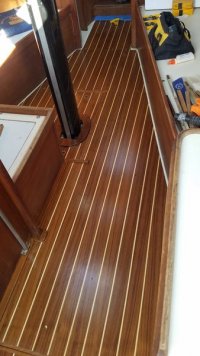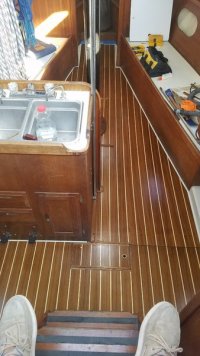c.gustafson
Member II
Hello Mates. One of the repair projects on my list is to refinish the cabin sole on the '87 Ericson 38-200 I purchased this past summer. I've spent quite a bit of time looking through prior threads on this and doing other research. I've noted several recommendations to use CPES as a primer for the ultimate finish product (likely polyeurethane). Are there any potential problems I should be aware of in using this product? Are there better alternatives? Is this product still highly recommended? As always, thanks in advance for your input.
Craig
Craig


